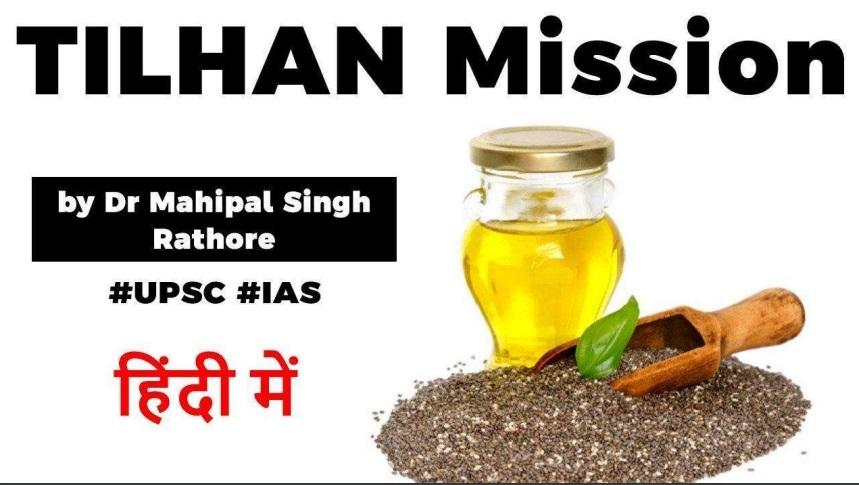Table of Contents

- The government will launch Tilhan Mission to make the country self-reliant in oilseed production.
The Oilseeds
- A large variety of oil seeds are produced in India such as groundnut, castor seed, sesame, rapeseed and mustard, linseed, Soybean, sunflower and nigerseed
- India is second largest producer of groundnut after China and third largest producer of Rapeseed after China and Canada
Oilseeds production
- 2017-18 – 31.31 million tonnes
- Soyabean – 10.98 million tonnes
- Groundnut – 9.18 million tonnes
- Rapeseed & Mustard – 8.32 million tonnes (record)
2018-19 – 32.26 million tonnes.
- Soyabean – 13.79 million tonnes
- Rapeseed and Mustard – 9.34million tonnes
- Groundnut – 6.69 million tonnes
2019-20 – estimated at 34.19 million tonnes

Importance of Oilseeds
- Oilseed crops are the second most important determinant of agricultural economy, next only to cereals within the segment of field crops.
- India is the fourth largest vegetable oil economy in the world after USA, China and Brazil.
- Oil seeds account for 13% of cropped area in the country.
- The self-sufficiency in oilseeds attained through “Yellow Revolution” during early 1990’s, could not be sustained beyond a short period.

- The National Mission on Oil Seeds and Oil Palm was launched by the Ministry of Agriculture in January 2014, to increase Oilseeds production
- Despite being the one of the largest oilseed crop producing country in the world, India is also one of the largest importers of vegetable oils today.
- There is a spurt in the vegetable oil consumption in recent years in respect of both edible as well as industrial usages.
Largest importers of Palm Oil
- India: US$5.5 billion (17.5% of total palm oil imports)
- China: $3.4 billion (10.8%)
- Pakistan: $1.9 billion (6.1%)
- Netherlands: $1.8 billion (5.7%)
- Spain: $1.3 billion (4.2%)
- United States: $1.1 billion (3.6%)
- Bangladesh: $1 billion (3.3%)
- Despite commendable performance of domestic oilseeds production of the nine annual crops (Compound Annual Growth Rate of 3.89%), it could not match with the galloping rate of per capita demand (~6%) due to enhanced per capita consumption (18 kg oil per annum)

Why is Oil demand increasing?
- Increasing income
- Urbanisation
- Changing food habits
- Deeper penetration of processed foods


- The demand-supply gap in the edible oils has necessitated huge imports accounting for 60 per cent of the country’s requirement (2016-17: import 14.01 million tonnes; cost Rs. 73,048 crore).
- India imports about 15 million tonnes of edible oil to meet its domestic demand.
National Mission on Oilseeds and Oil Palm (NMOOP)
- increasing Seed Replacement Ratio (SRR) with focus on Varietal Replacement; · increasing irrigation coverage under oilseeds from 26% to 36%;
- diversification of area from low yielding cereals crops to oilseeds crops; inter-cropping of oilseeds with cereals/ pulses/ sugarcane; · use of fallow land after paddy /potato cultivation;
- expansion of cultivation of Oil Palm and tree borne oilseeds in watersheds and wastelands;
- increasing availability of quality planting material enhancing procurement of oilseeds and collection; and
- processing of tree borne oilseeds.
Latest Burning Issues | Free PDF






















 WhatsApp
WhatsApp